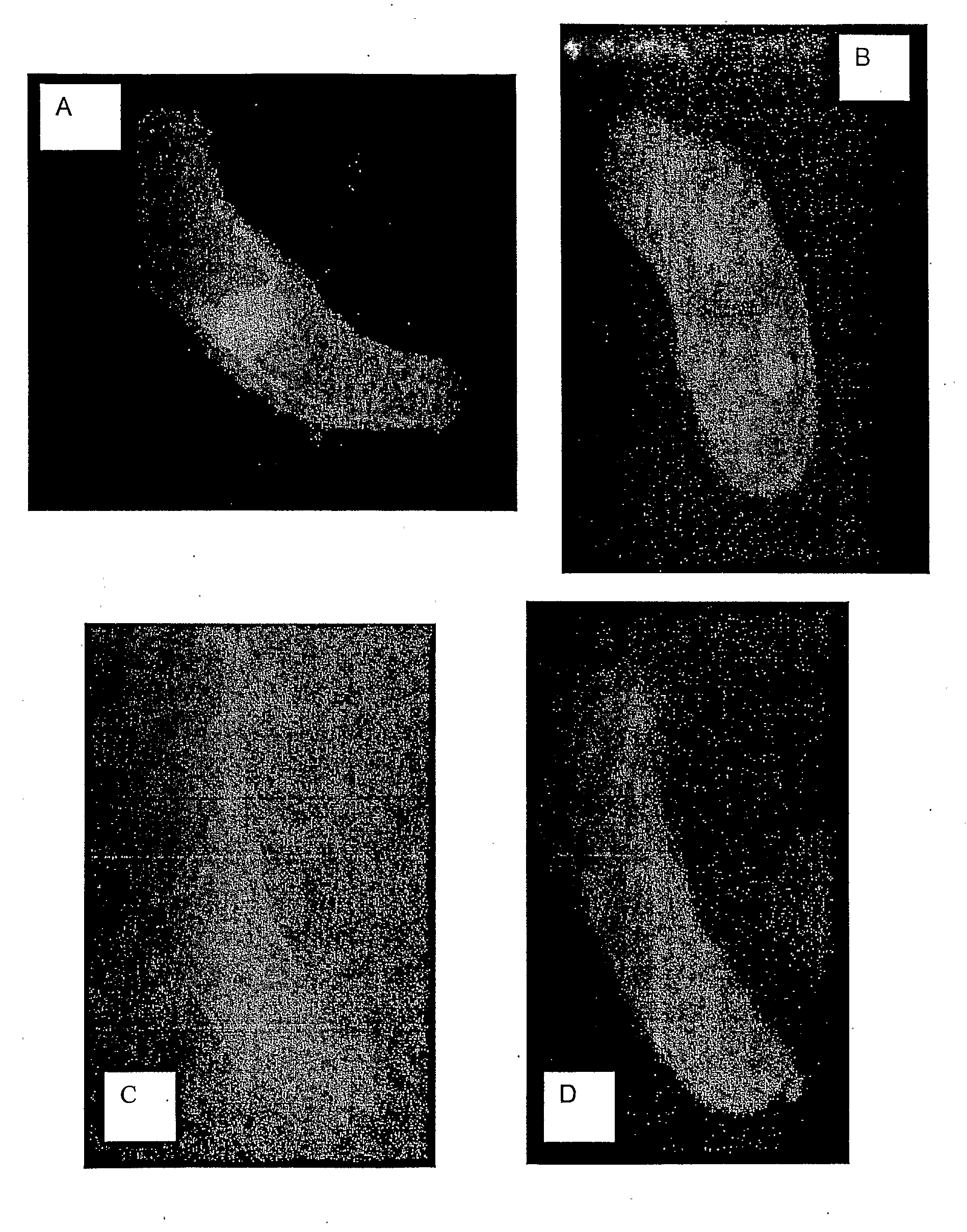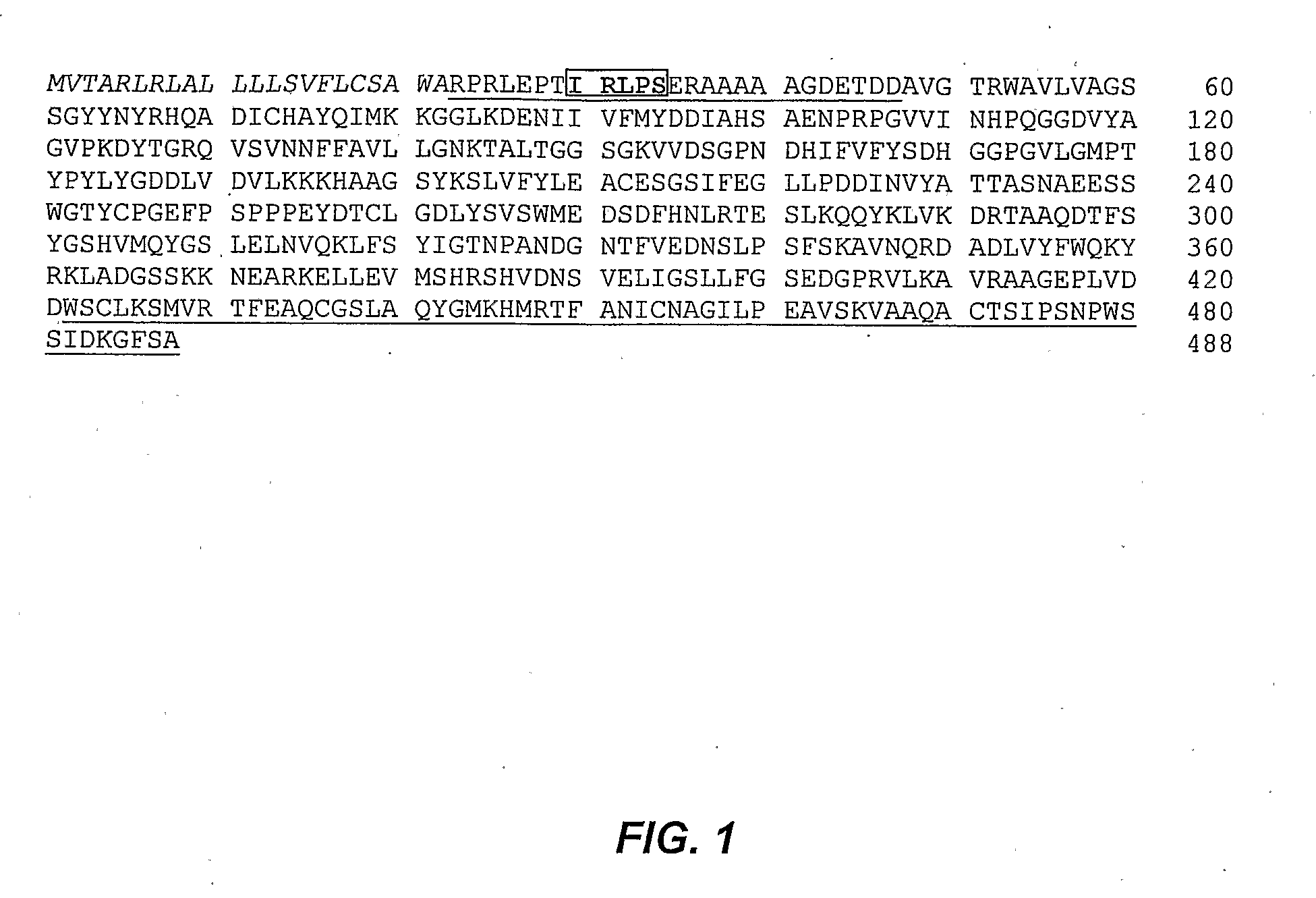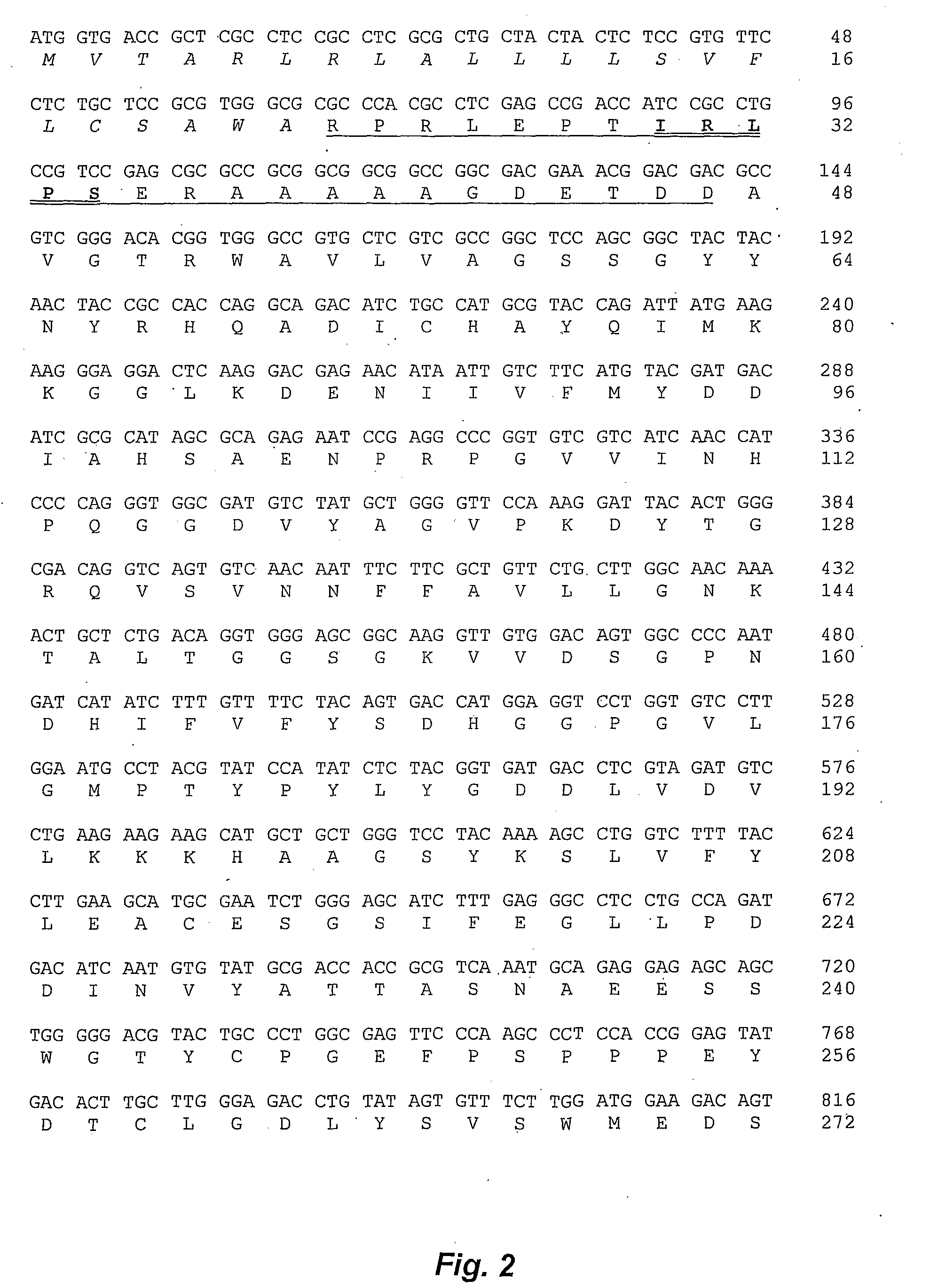Vacuole targeting peptide and nucleic acid
a vacuole and nucleic acid technology, applied in the field of vacuole targeting peptide and nucleic acid, can solve the problems of limited use, inability to identify targeting peptides that are functional in sugarcane, and considerable variability in the vacuole targeting ability of the sequences tested
- Summary
- Abstract
- Description
- Claims
- Application Information
AI Technical Summary
Benefits of technology
Problems solved by technology
Method used
Image
Examples
example 1
Materials and Methods
[0260]Source of cDNA Clones
[0261]As described in Casu et al. (2003), incorporated herein by reference, a cDNA library was constructed from mRNA samples isolated from maturing stem (internodes 6-11) from 12-month old plants of sugarcane variety Q117. Random clones were subjected to single pass sequencing, the trace files were edited and the extracted sequences then analysed by homology searching of the non-redundant DNA, EST (both BLASTN) and protein (BLASTX) databases (Altschul et al., 1990) located at NCBI, incorporated herein by reference. All ESTs were extensively annotated for possible function and / or role by a combination of automated filtering and manual inspection, and were also clustered into contigs with gcphrap (http: / / www.phrap.org / —deviation from default settings: gap penalty 15, shatter_greedy, a bandwidth of 30 and a minimum score of 100). Multiple sequence alignment was done with the CLUSTALW algorithm as implemented in MacVector 7.0 (Accelrys, Sa...
example 2
Identification of Candidate Gene
[0285]The endopeptidase encoded by EST MCSA201C03 is a member of the legumain family of cysteine proteases (clan CD, family C13) with a cleavage specificity for the carboxy side of asparagine residues (Chen et al. 1998). Legumains are also known as vacuolar processing enzymes (VPE) as, with the exception of a single cell wall representative from barley (Linnestad et al. 1998), they all occur in the vacuole (Müntz et al. 2002). γVPE from Arabidopsis has been localized to the lytic vacuole by electron microscope immuno-gold labeling (Kinoshita et al. 1999). VPEs are thought to be transported to the vacuole in vesicles in an inactive form and then auto-catalytically processed to an active form in the acidic environment of the vacuole. VPEs are also thought to have a role in the proteolytic activation of other classes of cysteine protease within the vacuole. In sugarcane, microarray experiments have shown that this sequence is strongly up-regulated as the...
example 3
Bioinformatic Analysis of Putative Domains in Sugarcane Sequence
[0286]The EST encoding the sugarcane endopeptidase (MCSA201C03) includes about 1 kb of sequence from the 3′ end of the gene. The investigators used this sequence together with other sugarcane sequences from public databases to construct a hypothetical complete endopeptidase sequence. This hypothetical sequence was used to predict primer sequences to generate a full-length clone from sugarcane stem cDNA by PCR. The products of the PCR were cloned into pGEMT and sequenced. The amino acid sequence encoded by this clone is shown in FIG. 1. Analysis with the Signal P program (V2.0) predicts that the sequence includes an N-terminal peptide, with predicted cleavage site between amino acid residues 22 and 23 (FIG. 1).
[0287]The N-terminal amino acid sequence of a homologue from Vigna, VmPE-1, has been determined experimentally. This suggests that residues 23 to 47 comprise an N-terminal propeptide which is removed during maturat...
PUM
| Property | Measurement | Unit |
|---|---|---|
| Structure | aaaaa | aaaaa |
| Adhesivity | aaaaa | aaaaa |
| Antimicrobial properties | aaaaa | aaaaa |
Abstract
Description
Claims
Application Information
 Login to View More
Login to View More - R&D
- Intellectual Property
- Life Sciences
- Materials
- Tech Scout
- Unparalleled Data Quality
- Higher Quality Content
- 60% Fewer Hallucinations
Browse by: Latest US Patents, China's latest patents, Technical Efficacy Thesaurus, Application Domain, Technology Topic, Popular Technical Reports.
© 2025 PatSnap. All rights reserved.Legal|Privacy policy|Modern Slavery Act Transparency Statement|Sitemap|About US| Contact US: help@patsnap.com



